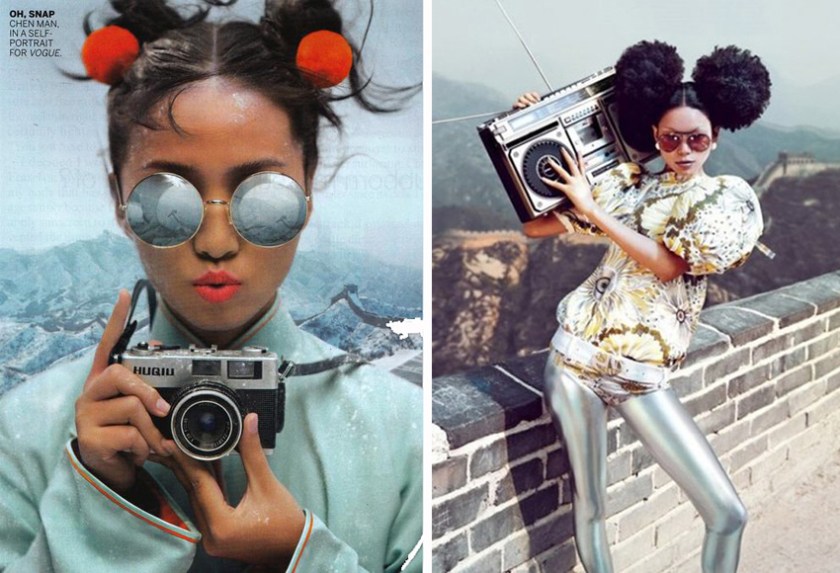
One of China’s top fashion photographers, Chen Man was born in 1980 in Beijing. After attending a high school specializing in art, she studied graphic design in Beijing at the Central Academy of Fine Arts, where she graduated in 2005. Prior to graduating, the foundation of Chen Man’s photographic career had already begun to be laid with the 2003 launch of a series of covers she produced for Vision, a Shanghai-based fashion magazine.

Between 2003 and 2007, the cover photos that Chen Man created for Vision were received in China as ground-breaking, and even avante garde. Her method of highly-stylized, over-the-top, manipulated images had never been seen before in Chinese magazines. But the nuances of glamour, energy, and freedom of imagination portrayed in her cover photos resonated with China’s emerging youth culture.

As the magazines reached the public, viewers were in awe of Chen Man’s skill in combining a strong aesthetic eye, photographic technique, and mastery of post-processing and 3D rendering. The fact that she was young was a pleasant surprise to Chen Man’s Chinese audience, and there was also an element of national pride that she was a Beijing native. This initial success launched Chen Man’s meteoric rise.

Since gaining recognition for her work for Vision, Chen Man has shot covers for every major Chinese magazine, and has also became a regular contributor to the Chinese editions of Vogue, Elle, Bazaar, Marie Claire, Cosmopolitan, and Esquire. She has also shot for ID, The Times, Wallpaper, Muse, Guess, Adidas, Motorola, Gucci, etc. Additionally, her work has been exhibited in many major galleries and museums.

Chen Man’s has created her own style of photography based on a combination of her skill with a camera, and her expertise with a computer.

According to Chen Man herself, “My work is complex and it matches the faces of our era; it’s Eastern and Western; it’s neither mainstream nor anti-mainstream; it’s the past, the present, and the future; it’s tacky and elegant. This is all achieved through a combination of ‘hardware’ from ancient Chinese culture and ‘software’ from modern Western culture.”

